Here’s the average value of the standard deviation of noise floor in the central 90% of the image vs ISO at 1/30th second:
If the amplifiers and the analog to digital converters in the a7 were perfect, and all the read noise came from the sensor array itself, then the read noise would double every time you doubles the ISO setting in the camera. Subtracting out that doubling, we get a corrected graph that looks like this:
You can see that there is a modest reduction in the noise floor up to about ISO 1600. Above that, turning up the ISO control does not reduce the effective noise floor, although it certainly reduces the dynamic range. There is one bit of strangeness: the sudden drop at ISO 25600. In order to figure what that’s all about, I looked at some histograms.
At ISO 100, we have the every-other-bucket histogram that we’re becoming familiar with:
At ISO 200, same-old-same-old, just with more noise:
Yet more noise at ISO 400:
And more yet at ISO 800:
And still more at ISO 1600. Bored? Hang in there.
At ISO 3200, we get combing — some of the buckets getting more than their one-door-down neighbors (the next-door neighbors’ bucket remain empty):
At ISO 6400, there is more combing. This is strange. It’s not just straight digital gain, which would result in every fourth or every eighth bucket being occupied. Also, the behavior of the two green channels starts to diverge, although, because of the log vertical scale that’s not as significant as it looks:
At ISO 12800, we have waves:
And at ISO 25600, we have enough to go surfing:
I suspect, but am not sure, that the odd behavior may be the result of the Sony raw compression algorithm. If we zoom out on the histogram, we can see that the noise is great enough to move into the compressed region of the tone curve:
I’m thinking that tone compression is probably the cause of the sudden drop in noise at ISO 25600. Also, if you look at the number of values in the lower right of the Rawdigger statistics, you can see that by ISO 3200 it exceeds 128, which is the number of different values that the delta modulation part of the Sony raw compression can handle. That’s not a problem unless that range is exceeded in one 16-pixel compression block.
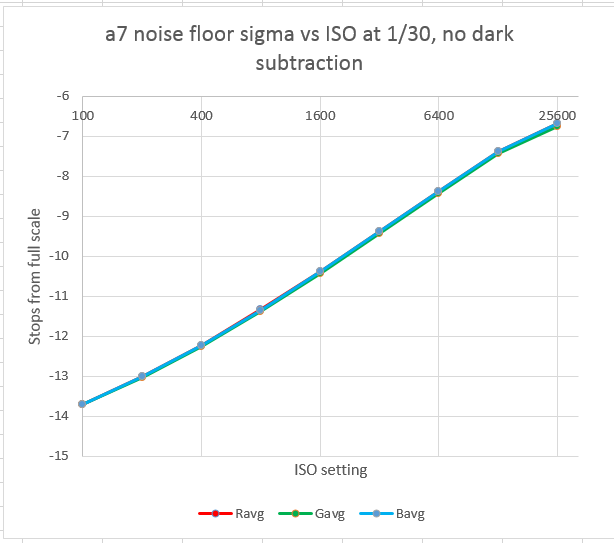

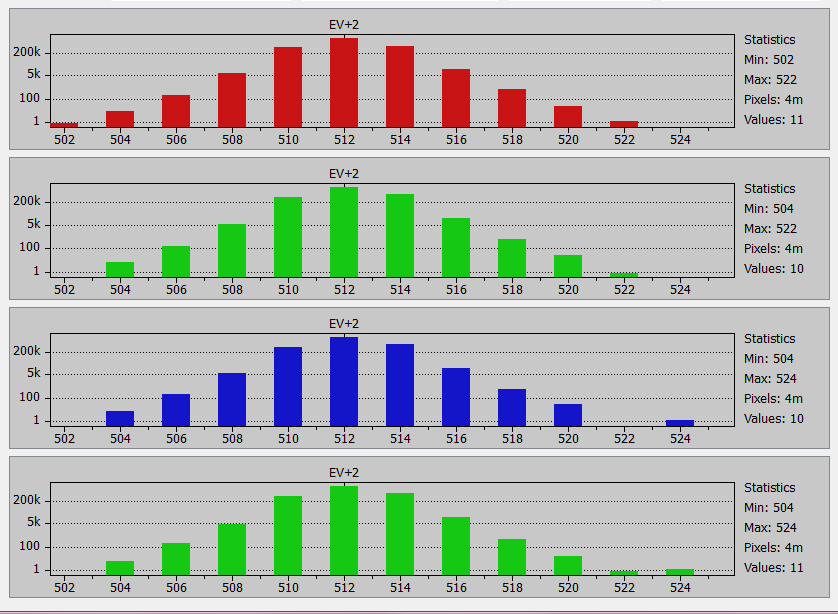
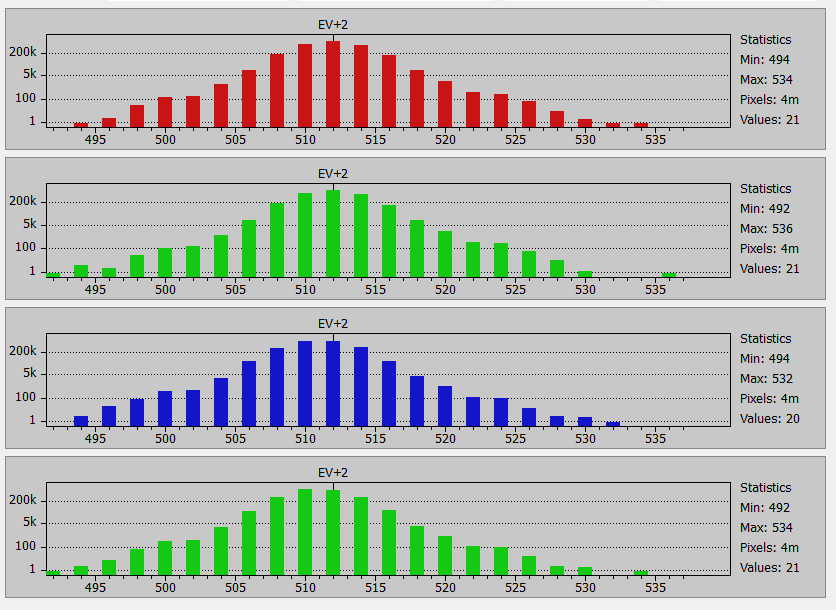
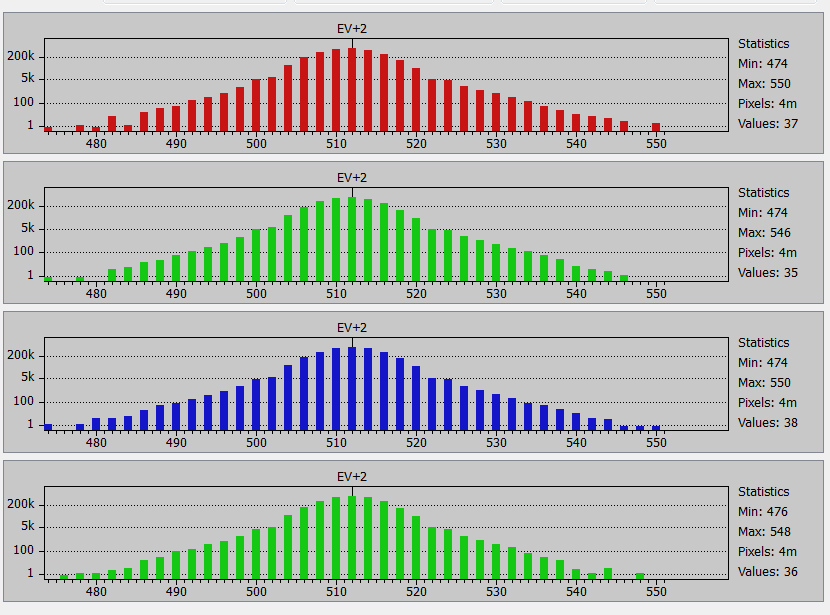

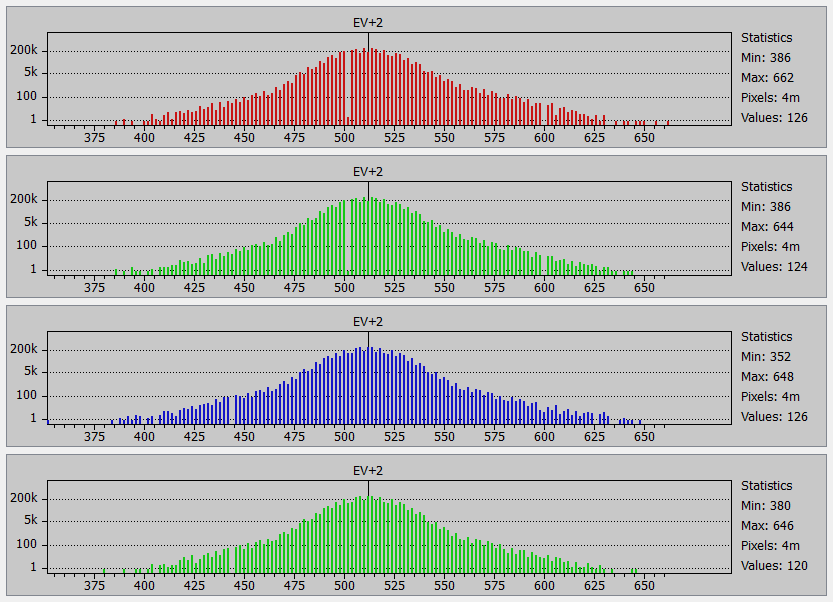
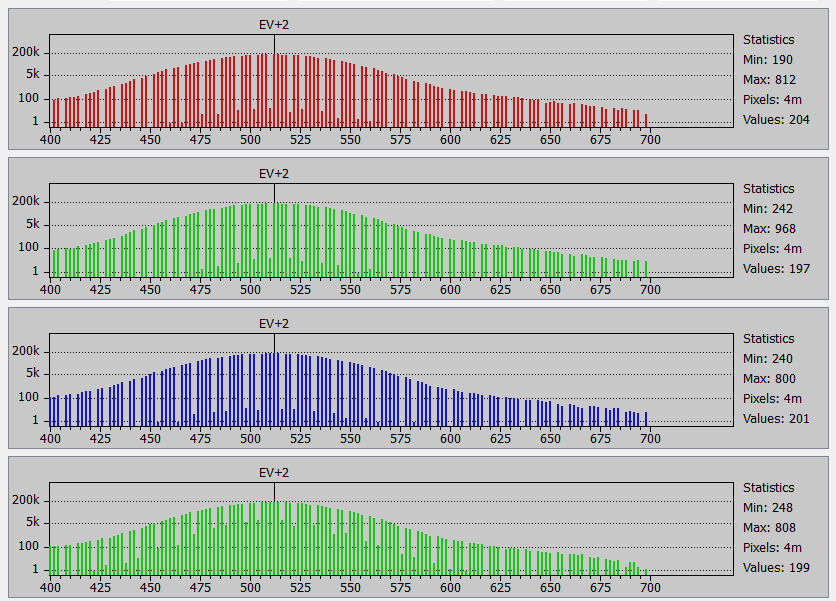
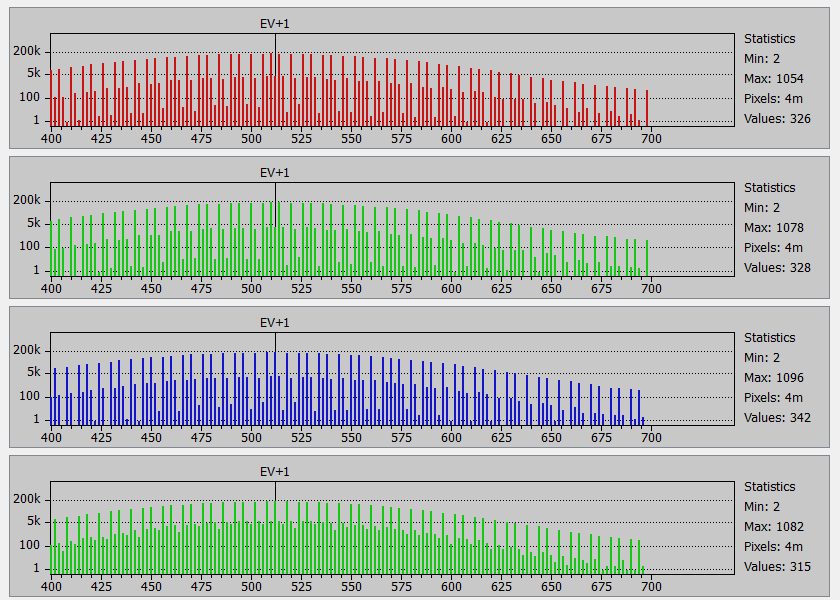
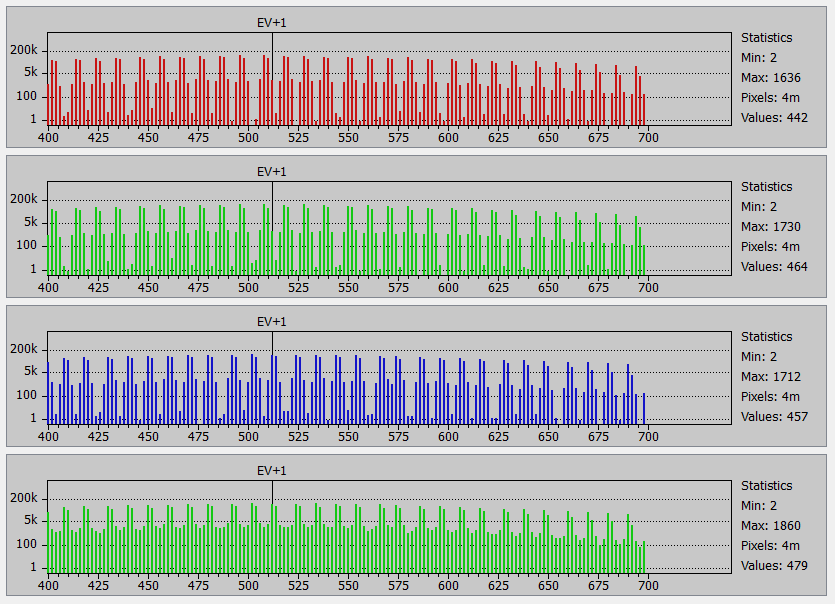

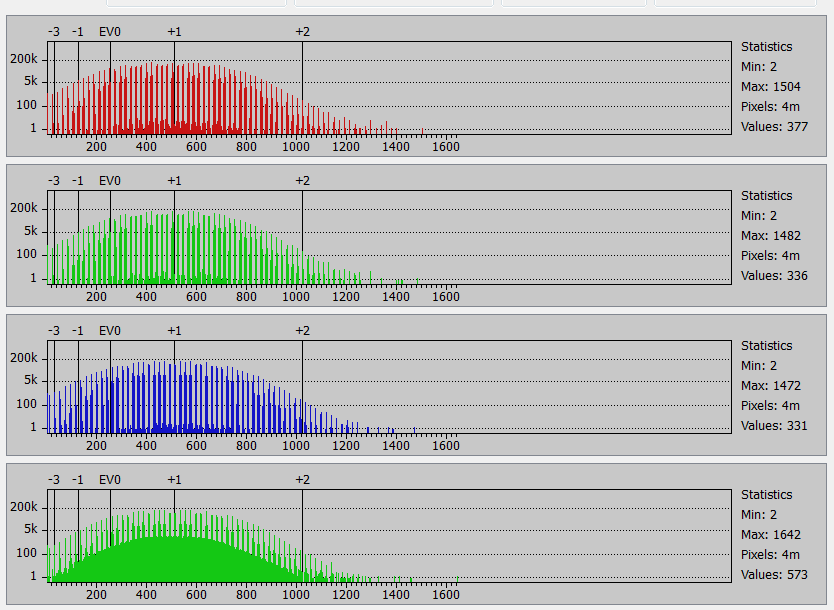
Leave a Reply